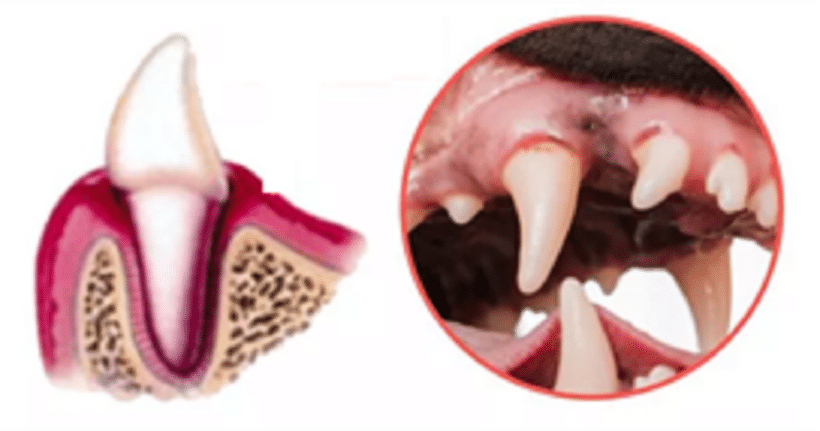Periodontal disease is an inflammatory condition of gums and teeth adjunct tissues, due to unusually high presence of bacterial numbers as well as tartar buildup.
On the long term, periodontal disease can cause severe problems in the teeth that can lead to lose them or -even worst, to affect the bone and produce fistulae -which are wholes or channels in the bone that can transmit the dental infection with other organs and is particularly painful.
How can we prevent periodontal disease?
The best way to prevent periodontal disease is through cleanliness.
Ideally, we should brush our dog’s teeth in a daily basis. In order to be able to do so, we need to get them used to be manipulated in the mouth -by playing with him, we can grab its mouth and then give him or her a treat, or praise them every time they allow us to manipulate its mouth, so brushing his teeth is not a painful, nor uncomfortable or traumatic experience.
Once our dog is used to be touch in the mouth, we should get him used to be brushed, there are different kinds of teeth including some that can be put in your finger which is easier for first timers. There are also different kinds of toothpaste specially formulated for dogs as regular toothpaste for humans, can be toxic for our dogs.
It’s useful also to provide our dogs with hard chewing materials, either toys that are designed for this purpose or other products such as teeth cleaning treats.
Dry food also helps to prevent periodontal disease -contrary to wet food that can remain in the spaces between the teeth and to promote bacterial proliferation.
Adult dogs or old dogs (older than 10 years old) have more probability of developing this disease and thus is very important to clean their teeth in a daily basis and to take them for periodical review at the veterinary clinic.
Some dogs have problems to lose the temporary teeth (baby teeth) – in this case, the pet must be taken to the veterinary consult as they must be removed because tartar can accumulate between them and the permanent tooth and produce periodontal disease in the long term.
How do I identify periodontal disease?
If we notice that our dog stops eating, paws its face, or has bad breath, we should check its teeth.
If teeth look dark (yellow or brown), reddish gums, or if we notice that there’s buildup of a hard patina on the teeth (tartar), it’s necessary to take him to the veterinarian for a checkup.
Sometimes, the dog will only need tartar to be removed, but this can be done only under anesthesia and using special equipment, also, the veterinarian will evaluate if there are any fistulae or other concerning conditions in regard of the oral health of our dogs.
